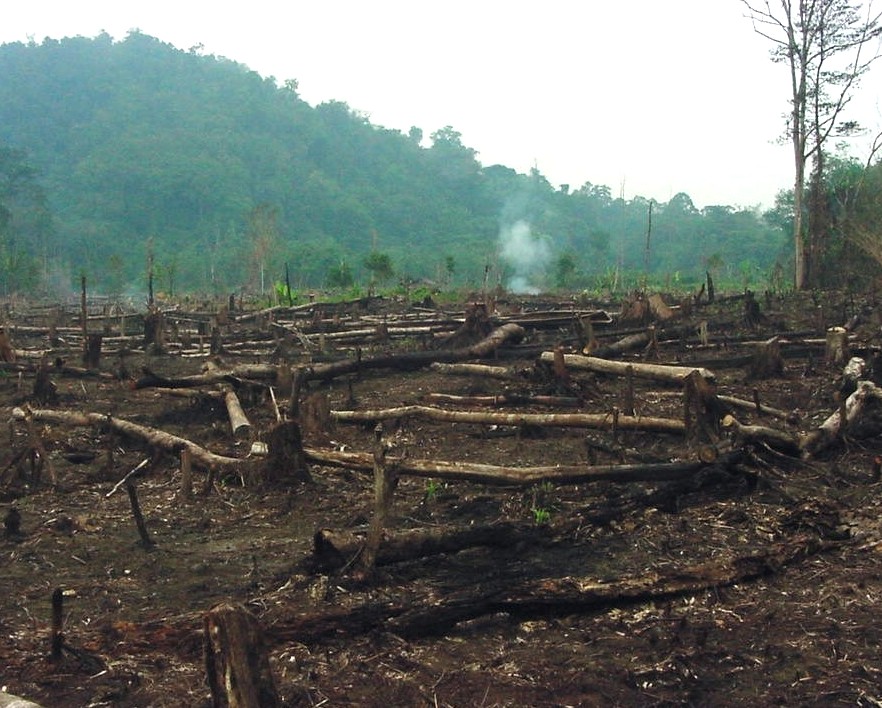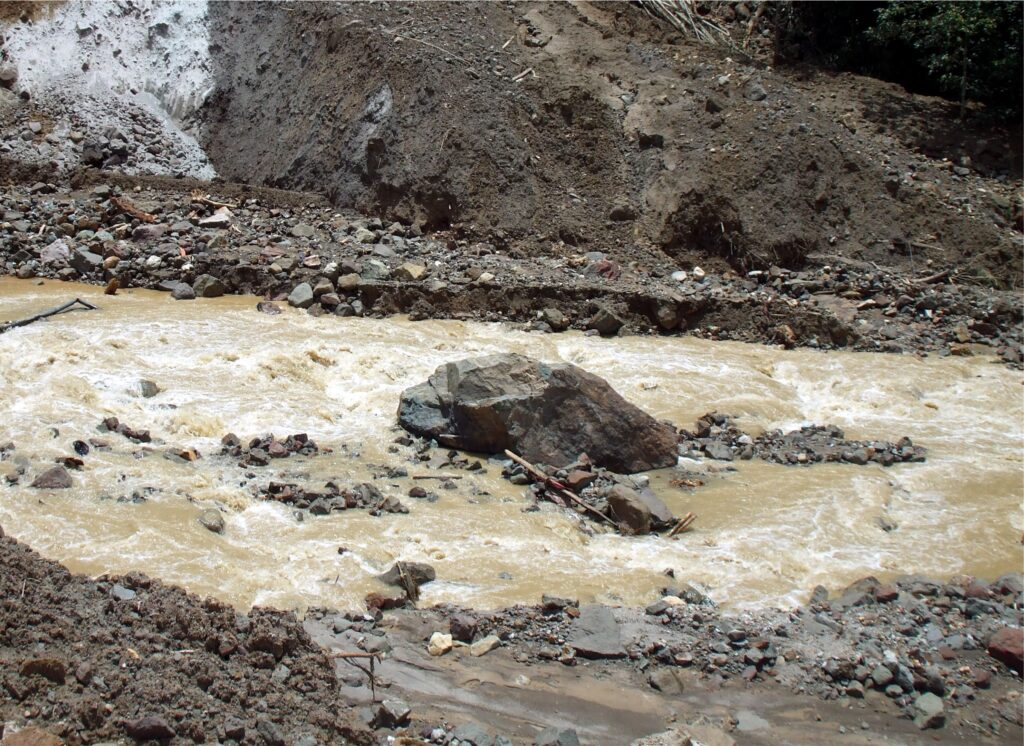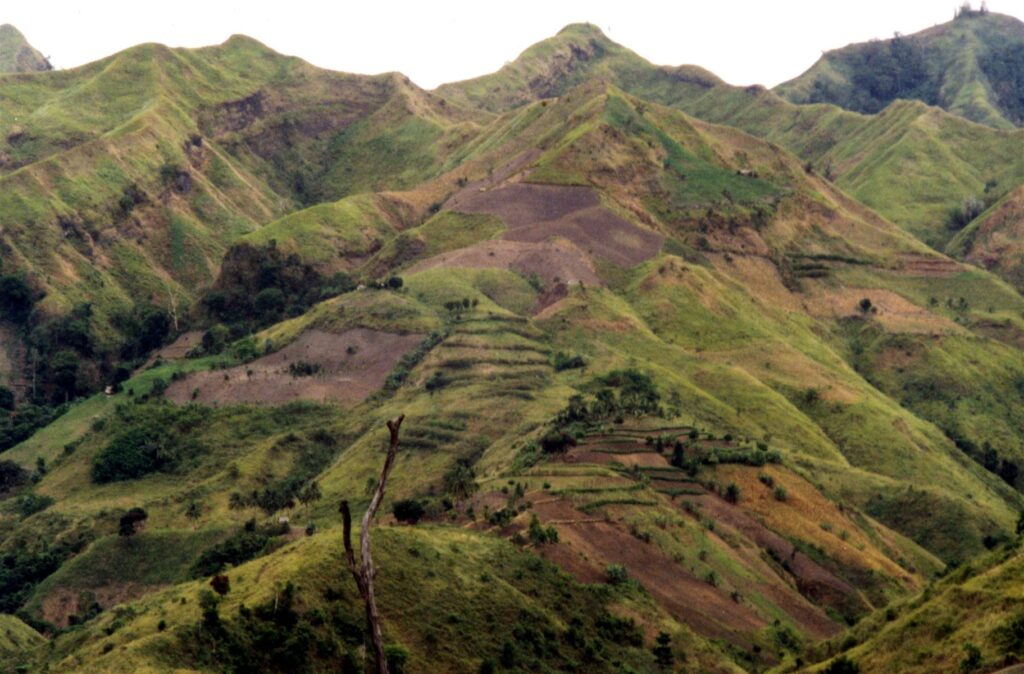Text and Photos by Henrylito D. Tacio
Perhaps not too many know this, but man’s survival hinges on land.
“Land is the foundation of all life-sustaining processes on the planet,” explained the Global Environment Facility (GEF), which was established on the eve of the 1992 Rio Earth Summit to help tackle the world’s most important pressing environmental problems. “It provides us with food and water.”
In addition, land “helps us manage environmental risks such as floods and drought,” the GEF stated. “It supports natural processes such as soil formation and nutrient cycling. And it offers opportunities for social and cultural activities.”
There’s more. “In economic terms, land benefits billions of people, including a large proportion that depends entirely on farming and forest products for their livelihood,” the GEF said, adding that “it’s imperative to maintain sustained and productive use of land.”
But human beings are not doing so. According to the United Nations report, The Global Land Outlook (GLO), said that pressures on global land resources “are now greater than ever.”
Consumption of the earth’s natural reserves has doubled in the last 30 years, “with a third of the planet’s land now severely degraded,” GLO deplored.
In the Philippines, the Global Assessment of Land Degradation and Improvement showed some 33,064,628 Filipinos affected by land degradation.
“The total degraded land is estimated at 132,275 square kilometers,” the study said, explaining that one square kilometer is equivalent to 100 hectares. As such, roughly 1.3 million hectares in the country’s total land area of 30 million hectares are already degraded.
Land degradation is a broad term that can be applied differently across a wide range of scenarios. But as a global problem, it is largely related to agricultural use.
Among those cited as causes are land clearance (deforestation is an example), agricultural depletion of soil nutrients through poor farming practices (“kaingin” farming or slash-and-burning agriculture comes to mind), livestock raising (overgrazing, for one), inappropriate irrigation, urban sprawl and commercial development, and vehicle off-roading.
Other causes include quarrying (sand, stone, ore, and minerals), monoculture (planting of a single crop like pineapple, banana, or corn), dumping of non-biodegradable trash such as plastics, and soil degradation.
Desertification, a term applied to the severe degradation of land to the point where it resembles a desert, is the ultimate human insult to land and soil resources. It results from overuse by humans, sometimes in combination with variations in climate such as droughts.
In the Philippines, a report published by the Department of Agriculture in 2010 cited inadequate and inefficient irrigation systems, increasing population and rural poverty, poor land and watershed management as those that contribute to land degradation.

After deforestation 
Soil erosion 
Denuded mountains
More often than not, the ever-increasing number of people is the cause of land degradation. The UN report said so, too: “Populations abruptly gained access to what seemed to be an unlimited stock of natural capital, where land was seen as a free gift of nature.”
That’s where the problem lies. “Using his burgeoning intelligence, this most successful of all mammals has exploited the environment to produce food for an ever-increasing population,” award-winning British director and environmentalist David Attenborough pointed out. Instead of controlling the environment for the benefit of the population, perhaps it’s time we controlled the population to allow the survival of the environment.”
Others, however, believe that high population density is not always related to land degradation. “Rather, it is the practices of the human population that can cause a landscape to become degraded,” Wikipedia explained. “Populations can be a benefit to the land and make it more productive than it is in its natural state.”
Gary Gardner of the Washington-based Worldwatch Institute said that in the past, civilizations could simply leave one piece of land for another when the soil nutrients had been depleted. Today, we no longer have this luxury; the world has, for all intents and purposes, run out of available cropland.
“If the soil on which all agriculture and all human life depends is wasted away, then the battle to free mankind from want cannot be won,” said Lord John Boyd Orr.
Soil formation takes time: only one inch of topsoil for every 100 to 1,000 years. About 6 inches of topsoil is usually cultivated in modern agriculture, according to Penelope ReVelle and Charles ReVelle, authors of The Environment: Issues and Choices for Society.
“If soil erodes at about 33 tons per hectare per year, about 0.10 inch of soil is lost each year and the whole plow layer in 60-70 years,” they wrote.
“Soil erosion is an enemy to any nation – far worse than any outside enemy coming into a country and conquering it because it is an enemy you cannot see vividly,” said Rev. Harold R. Watson, who received the 1985 Ramon Magsaysay Award for peace and international understanding. “It’s a slow creeping enemy that soon possesses the land. We must consider ourselves in a state of emergency; our topsoil is all going….”
Without topsoil, farming suffers. Lester R. Brown and Edward C. Wolf, authors of a Worldwatch paper entitled “Soil Erosion: Quiet Crisis in the World Economy,” say that erosion affects crop production in two ways. They explain: “The loss of topsoil reduces the inherent productivity of land, both through the loss of nutrients and degradation of the physical structure. It also increases the costs of production.
“When farmers lose topsoil,” the authors continue, “they may increase land productivity by substituting energy in the form of fertilizer. Hence, farmers losing topsoil may experience either a loss in land productivity or a rise in costs of agricultural inputs. And if productivity drops too low or agricultural costs rise too high, farmers are forced to abandon their land.”

